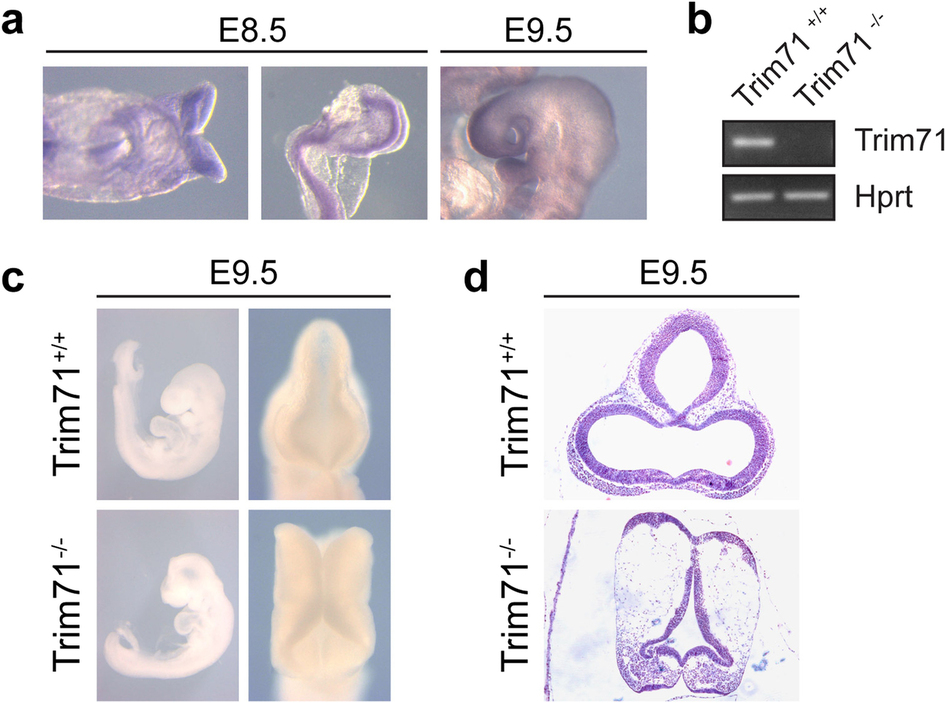Our official English website, www.x-mol.net, welcomes your
feedback! (Note: you will need to create a separate account there.)
Co-existence of intact stemness and priming of neural differentiation programs in mES cells lacking Trim71.
Scientific Reports ( IF 3.8 ) Pub Date : 2015-Jun-09 , DOI: 10.1038/srep11126
Sibylle Mitschka , Thomas Ulas , Tobias Goller , Karin Schneider , Angela Egert , Jérôme Mertens , Oliver Brüstle , Hubert Schorle , Marc Beyer , Kathrin Klee , Jia Xue , Patrick Günther , Kevin Bassler , Joachim L. Schultze , Waldemar Kolanus
Scientific Reports ( IF 3.8 ) Pub Date : 2015-Jun-09 , DOI: 10.1038/srep11126
Sibylle Mitschka , Thomas Ulas , Tobias Goller , Karin Schneider , Angela Egert , Jérôme Mertens , Oliver Brüstle , Hubert Schorle , Marc Beyer , Kathrin Klee , Jia Xue , Patrick Günther , Kevin Bassler , Joachim L. Schultze , Waldemar Kolanus

|
Regulatory networks for differentiation and pluripotency in embryonic stem (ES) cells have long been suggested to be mutually exclusive. However, with the identification of many new components of these networks ranging from epigenetic, transcriptional, and translational to even post-translational mechanisms, the cellular states of pluripotency and early differentiation might not be strictly bi-modal, but differentiating stem cells appear to go through phases of simultaneous expression of stemness and differentiation genes. Translational regulators such as RNA binding proteins (RBPs) and micro RNAs (miRNAs) might be prime candidates for guiding a cell from pluripotency to differentiation. Using Trim71, one of two members of the Tripartite motif (Trim) protein family with RNA binding activity expressed in murine ES cells, we demonstrate that Trim71 is not involved in regulatory networks of pluripotency but regulates neural differentiation. Loss of Trim71 in mES cells leaves stemness and self-maintenance of these cells intact, but many genes required for neural development are up-regulated at the same time. Concordantly, Trim71(-/-) mES show increased neural marker expression following treatment with retinoic acid. Our findings strongly suggest that Trim71 keeps priming steps of differentiation in check, which do not pre-require a loss of the pluripotency network in ES cells.
中文翻译:

缺乏Trim71的mES细胞中完整干细胞的共存和神经分化程序的启动。
长期以来,人们一直建议在胚胎干(ES)细胞中分化和多能性的调控网络是互斥的。然而,随着这些网络中许多新成分的鉴定,包括表观遗传,转录和翻译乃至翻译后机制,多能性和早期分化的细胞状态可能并非严格意义上的双峰模式,但分化干细胞似乎已经开始通过茎和分化基因同时表达的各个阶段。RNA结合蛋白(RBP)和微小RNA(miRNA)等翻译调节因子可能是指导细胞从多能性分化到分化的主要候选药物。使用Trim71(Tripartite基序(Trim)蛋白家族的两个成员之一,其在鼠ES细胞中表达RNA结合活性),我们证明了Trim71不参与多能性调节网络,但调节神经分化。mES细胞中Trim71的缺失保留了这些细胞的干性和自我维持能力,但是神经发育所需的许多基因同时被上调。一致地,用视黄酸治疗后,Trim71(-/-)mES显示神经标志物表达增加。我们的发现有力地表明,Trim71可以保持分化的启动步骤,而这并不需要在ES细胞中丧失多能性网络。Trim71(-/-)mES在视黄酸治疗后显示神经标志物表达增加。我们的发现有力地表明,Trim71可以保持分化的启动步骤,而这并不需要在ES细胞中丧失多能性网络。Trim71(-/-)mES在视黄酸治疗后显示神经标志物表达增加。我们的发现有力地表明,Trim71可以保持分化的启动步骤,而这并不需要在ES细胞中丧失多能性网络。
更新日期:2015-06-10
中文翻译:

缺乏Trim71的mES细胞中完整干细胞的共存和神经分化程序的启动。
长期以来,人们一直建议在胚胎干(ES)细胞中分化和多能性的调控网络是互斥的。然而,随着这些网络中许多新成分的鉴定,包括表观遗传,转录和翻译乃至翻译后机制,多能性和早期分化的细胞状态可能并非严格意义上的双峰模式,但分化干细胞似乎已经开始通过茎和分化基因同时表达的各个阶段。RNA结合蛋白(RBP)和微小RNA(miRNA)等翻译调节因子可能是指导细胞从多能性分化到分化的主要候选药物。使用Trim71(Tripartite基序(Trim)蛋白家族的两个成员之一,其在鼠ES细胞中表达RNA结合活性),我们证明了Trim71不参与多能性调节网络,但调节神经分化。mES细胞中Trim71的缺失保留了这些细胞的干性和自我维持能力,但是神经发育所需的许多基因同时被上调。一致地,用视黄酸治疗后,Trim71(-/-)mES显示神经标志物表达增加。我们的发现有力地表明,Trim71可以保持分化的启动步骤,而这并不需要在ES细胞中丧失多能性网络。Trim71(-/-)mES在视黄酸治疗后显示神经标志物表达增加。我们的发现有力地表明,Trim71可以保持分化的启动步骤,而这并不需要在ES细胞中丧失多能性网络。Trim71(-/-)mES在视黄酸治疗后显示神经标志物表达增加。我们的发现有力地表明,Trim71可以保持分化的启动步骤,而这并不需要在ES细胞中丧失多能性网络。































 京公网安备 11010802027423号
京公网安备 11010802027423号